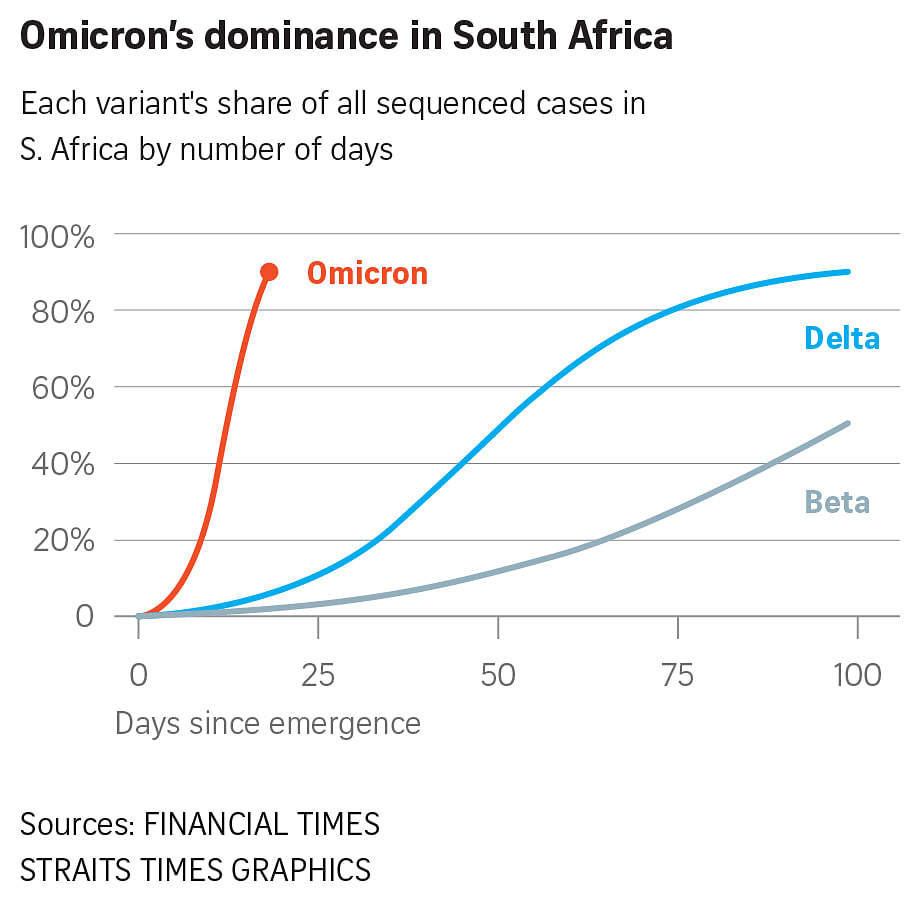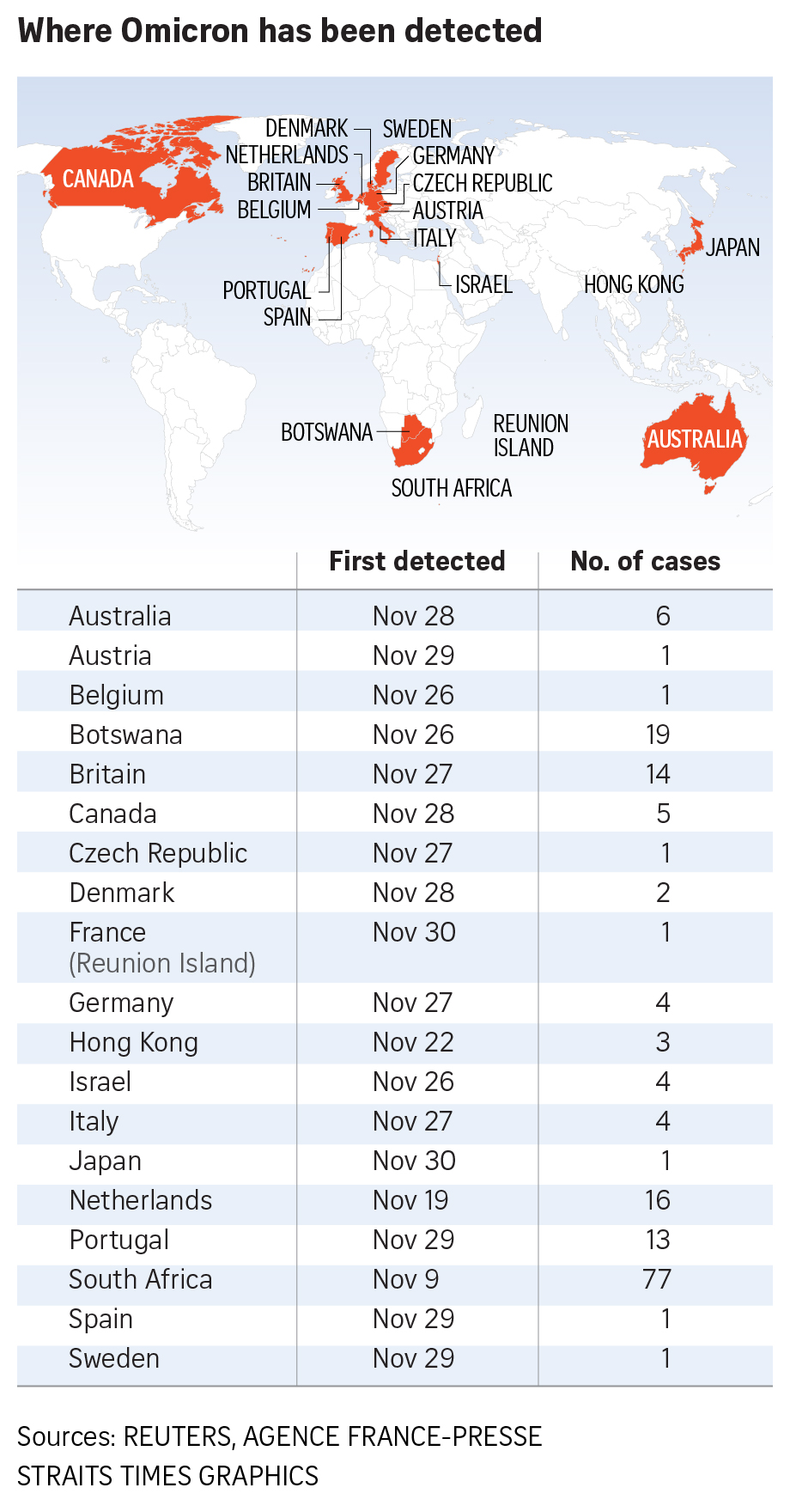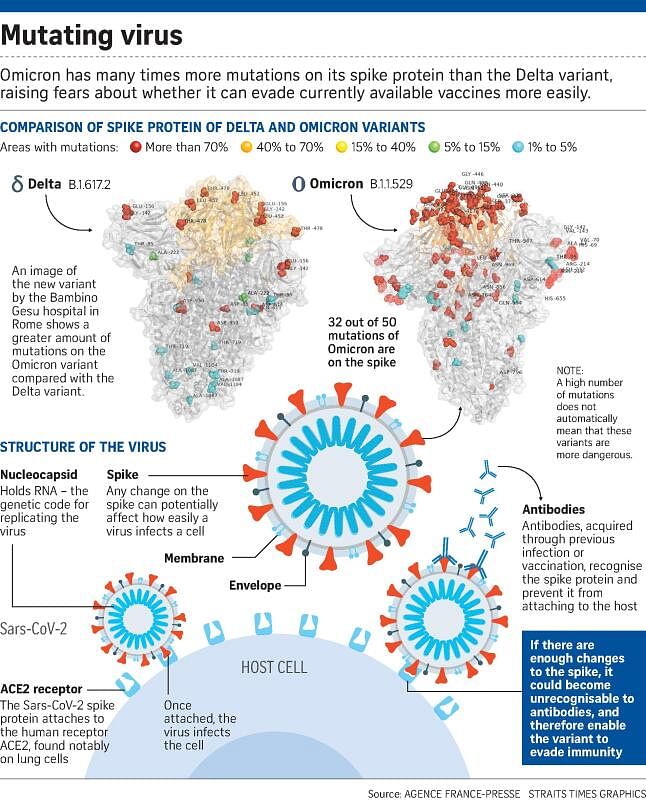NEW YORK (NYTIMES) - The Omicron variant of the coronavirus has alarmed many scientists because of the sheer number of genetic mutations it carries - about 50 in all, including at least 26 that are unique to it.
But more does not necessarily mean worse: Mutations sometimes work together to make a virus more fearsome, but they may also cancel one another out.
"In principle, mutations can also work against each other," said Dr Jesse Bloom, an evolutionary biologist at the Fred Hutchinson Cancer Research Centre in Seattle.
"However, in this case evolutionary selection is more likely to lead to the spread of a new variant with favourable than unfavourable combinations of mutations."
Still, this phenomenon, called epistasis, is why scientists are reluctant to speculate on Omicron's attributes, even though individual mutations in the variant are associated with greater transmissibility or with an ability to dodge the body's immune defences.
"It is important to get a sense of the full virus," said Dr Penny Moore, a virus expert at the National Institute for Communicable Diseases in South Africa.
Dr Moore's team is among dozens worldwide trying to understand whether current vaccines will work against Omicron.
The researchers are creating artificial versions of the virus that contain all of Omicron's mutations, rather than making judgements based on a subset of mutations.
It is a lesson researchers learnt last year, when the Beta variant emerged in South Africa.
They estimated that variant's ability to evade immunity based on one particular mutation, E484K. But Beta also had two other mutations that turned out to affect sensitivity to vaccines.
"The combination of those three mutations was more resistance than a virus that contained only E484K," Dr Moore said. Studying the single mutation "turned out to be misleading".
Omicron carries a mutation called N501Y, which is thought to allow the virus to bind to human cells more tightly. This mutation was also present in the Alpha variant and was linked to its contagiousness.
"Nonetheless, it ended up being Delta, which doesn't have that particular mutation, that was more even more transmissible than Alpha," Dr Bloom said. "That's because Delta had other mutations that enhance transmissibility."
A variant's contagiousness depends on how well the virus binds to receptors on human cells, but also on the stability of the virus, where in the airways it replicates and how much of it is exhaled.
Omicron has a cluster of mutations that are all linked to tighter binding to human cells.
"But acting together, they might have a somewhat different effect," Dr Bloom said.
For that reason, he added, he cannot predict how the variant will act in the body.
That will require laboratory studies, which are under way across the globe.










